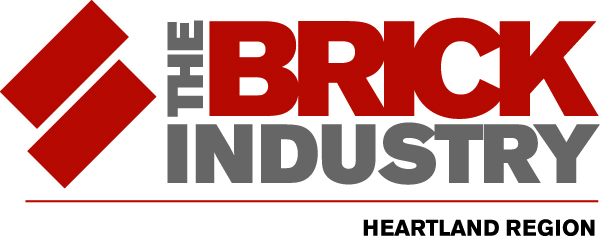Get to know us!
/We’ve been posting for awhile now about the incredible beauty, design flexibility, energy efficiency, and durability of fired clay brick. It’s about time we introduced ourselves!
The Heartland Region of the Brick Industry Association (BIA) is an alliance of Midwest brick manufacturers that operates as a regional subset of the BIA. In case you didn’t know, the BIA is the national trade association representing distributors and manufacturers of clay brick and suppliers of related products and services. Since its founding in 1934, the association has been the nationally recognized authority on clay brick construction.
So now that we have that out of the way, how about a little quiz to see what you know about the manufacture of brick in the Midwest?
How many states are considered to be part of the Heartland Region of the BIA?
a) 15
b) 8
c) 4
How many companies manufacture fired clay brick in the Heartland Region?
a) 7
b) 5
c) 2
How long has brick been commercially produced in the Heartland?
a) 85 years
b) 150 years
c) 180 years
How many brick sizes are manufactured by BIA-Heartland’s member manufacturers?
a) Fewer than 5
b) 5 - 10
c) More than 10
How many unique brick colors are manufactured by BIA-Heartland’s member manufacturers?
a) Fewer than 10
b) 50 - 75
c) More than 75
How many unique brick textures are manufactured by BIA-Heartland’s member manufacturers?
a) Fewer than 10
b) 20 - 30
c) More than 30
Answers:
1. (b) 8 - Wisconsin, Minnesota, Iowa, Missouri, North Dakota, South Dakota, Nebraska, Kansas
2. (a) 7 - Five of the seven companies that manufacture brick within the geographic bounds of the region are members of BIA-Heartland:
Acme Brick
Endicott Clay Products
Glen-Gery
Hebron Brick
Yankee Hill Brick
BIA-Heartland is also supported by several other brick producers that do not manufacture within the region, but sell their products in it. These are: The Belden Brick Company; The Bowerston Shale Company; General Shale, Inc.; Henry Brick Company; Palmetto Brick Company; Pine Hall Brick Company; Triangle Brick Company.
3. (b) 150 years. This is a good estimate, but it’s a bit tricky to determine with accuracy, depending on how one defines “commercial production”. Because of the weight of brick, most early brick buildings constructed on the frontier were formed and fired on the building site, likely by the eventual occupants of the structure. It was not until the railroad connected a critical mass of frontier towns that commercial off-site manufacturing became viable. But, there were likely commercial brick builders operating in the region who transported all the equipment necessary to manufacture brick on-site and in step with construction around 1870 - 1890. St. Louis, at the eastern-most part of the Heartland Region, also had established “brick yards” producing brick for local construction during the 1870’s. The journal article, Nineteenth Century Midwestern Brick, by William D. Waters, Jr. is a fascinating read for those interested in architecture and construction on the Midwestern frontier.
4. (c) More than 10. Brick from Heartland member manufacturers is available in at least 12 sizes, most of which are standardized, but some manufacturers also produce brick with unique dimensions. And, this doesn’t include custom brick shapes, of course, which are produced to customers’ specifications. It also doesn’t include brick pavers used in streets, sidewalks, and patios.
5. (c) More than 75. This is a conservative estimate. Color in brick is affected by the characteristics of locally-mined clays, added pigments, firing temperatures, and chemical reactions that happen during firing.
6. (c) More than 30. Again, a conservative estimate. Texture can be impacted by the die in use while the clay mixture is extruded, the particular content of the clay mixture, and the way the brick is trimmed, pressed, or manipulated before it is fired. Dozens of surface coatings can also be applied, which are not even figured in the “More than 30” textures!
That was fun! Got more questions about BIA-Heartland, or about brick manufacturing in the Midwest? Don’t hesitate to get in touch with us at info@heartlandbrick.com.











